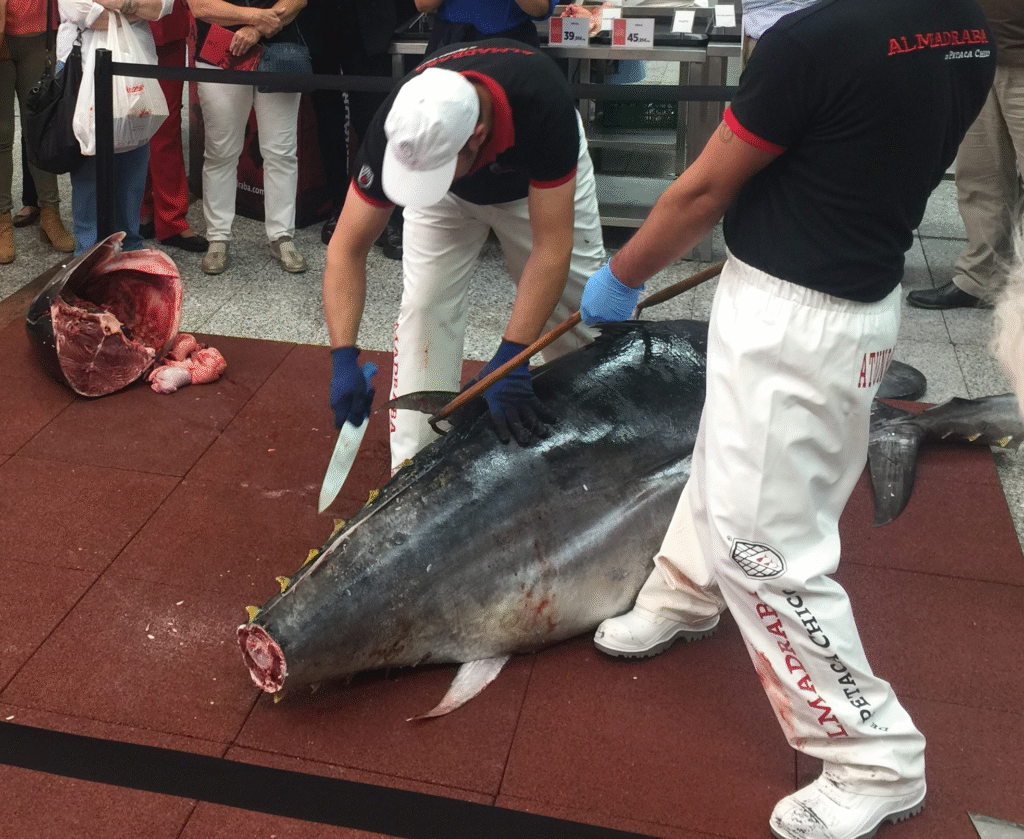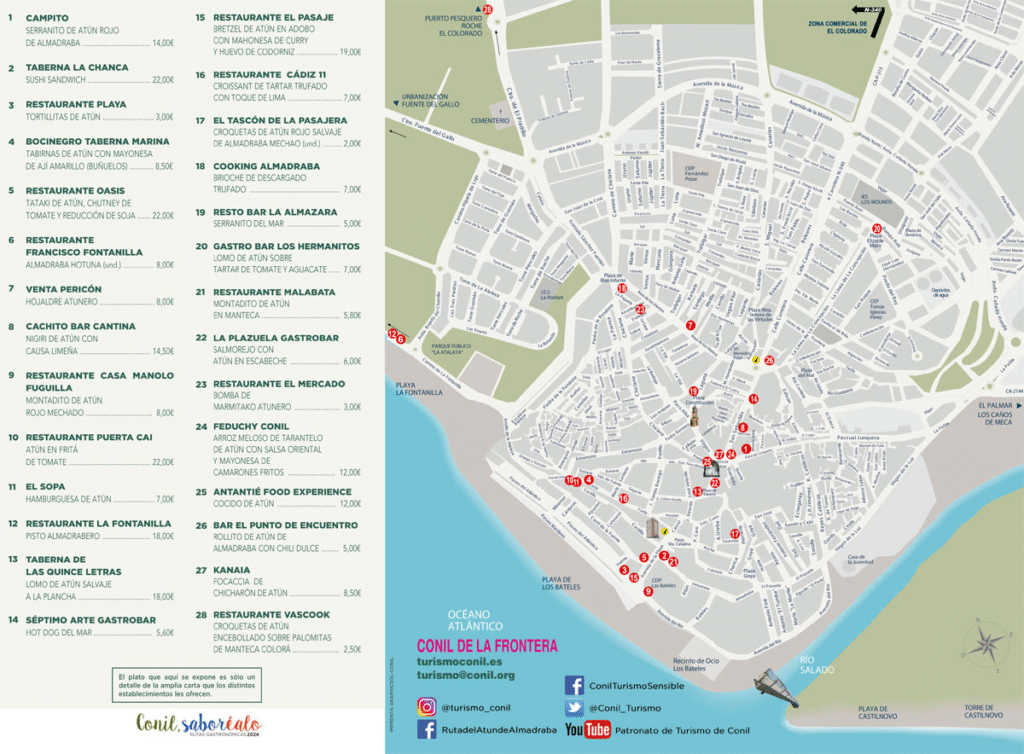Every spring, Conil de la Frontera is transformed thanks to the TUNA ROUTEan event that pays tribute to the red almadraba tuna. This fish, considered a jewel of the sea, is not only delicious, but hides behind it a series of fascinating facts that make this gastronomic celebration much more than a date for foodies.
Here are five curiosities that make the tuna route a one-of-a-kind experience.

During the route, one of the most anticipated moments is the tuna gruntThe name "ronqueo" comes from the sound produced by the knife when it scrapes the tuna's spine, similar to a snore. The name "ronqueo" comes from the sound produced by the knife when it grazes the tuna's spine, similar to a snore. Watching the master ronqueadores in action is like witnessing a culinary choreography where each cut has its own technique and purpose.
This ancestral art not only makes it possible to take advantage of all parts of the tuna, but also demonstrates the deep respect that local fishermen and cooks have for the product.
The bluefin tuna from almadraba is a migratory species that travels thousands of kilometers from the Atlantic to the Mediterranean to spawn. It is during this journey when, every spring, it crosses the waters off the coast of Cadiz. That is where the almadraba comes into action, an ancient system of nets that allows it to be caught in a selective and sustainable way.
This method is considered one of the most respectful of the marine environment, and the result is tuna of exceptional quality.

During the tuna route, Conil becomes a great culinary showcase where more than thirty establishments compete to offer the most creative tapa. Each year, local chefs reinvent the use of tuna with international cooking techniques, from ceviches and tatakis to fusion dishes with nods to Japanese, Arabic or South American cuisine.
The public can walk through the different venues tasting unique tapas that are only offered during the event, turning each visit into a route of unparalleled flavor.
The TUNA ROUTE is not limited to cuisine: it also includes cultural activities, workshops, exhibitions and guided tours through the most seafaring Conil. It is common to organize visits to the old buildings of the almadraba or talks about the fishing history of the town. In addition, there are concerts and family events that fill the streets of the old town with life throughout the season.

This comprehensive approach makes the route a celebration of local heritage, ideal for those seeking a more complete experience.
The bluefin tuna from almadraba is one of the most valued fish in the world, especially in Japanese haute cuisine. Its meat is rich in healthy fat, with a flavor and texture that make it ideal for raw consumption. Precisely because of its quality, the fishing of this species is strictly regulated to avoid overfishing.
Participating in the Conil tuna route is also a way to support responsible fishing and respect for the natural cycles of the sea, something that the event actively promotes.
Conclusion
The TUNA ROUTE in Conil is not only an excuse to eat well: it is a window to a centenary tradition, to a way of life linked to the sea and to a cuisine that knows how to reinvent itself without losing its roots. If you have not yet lived this experience, in Villasflamenco you find the room to have it just a stone's throw away.